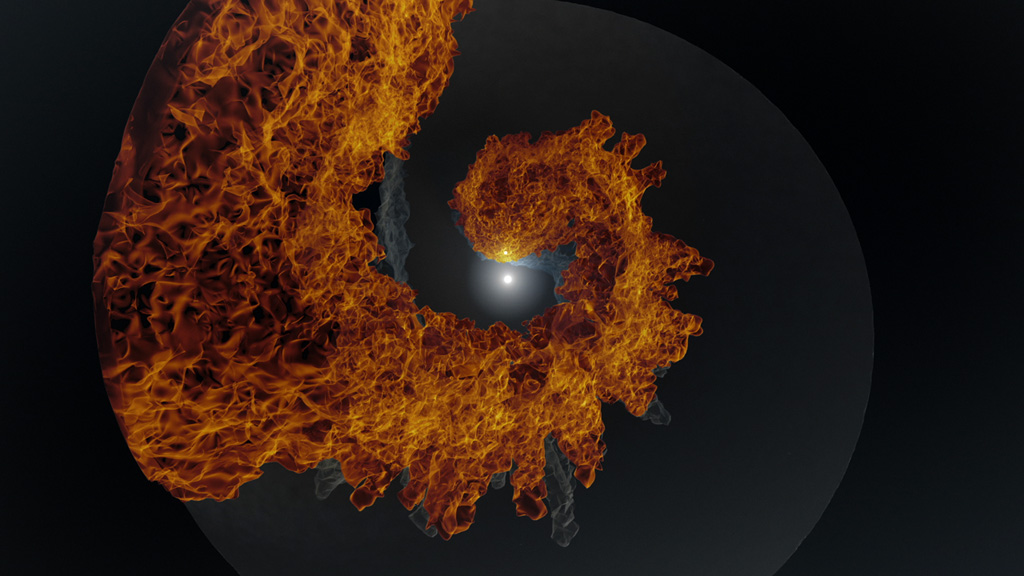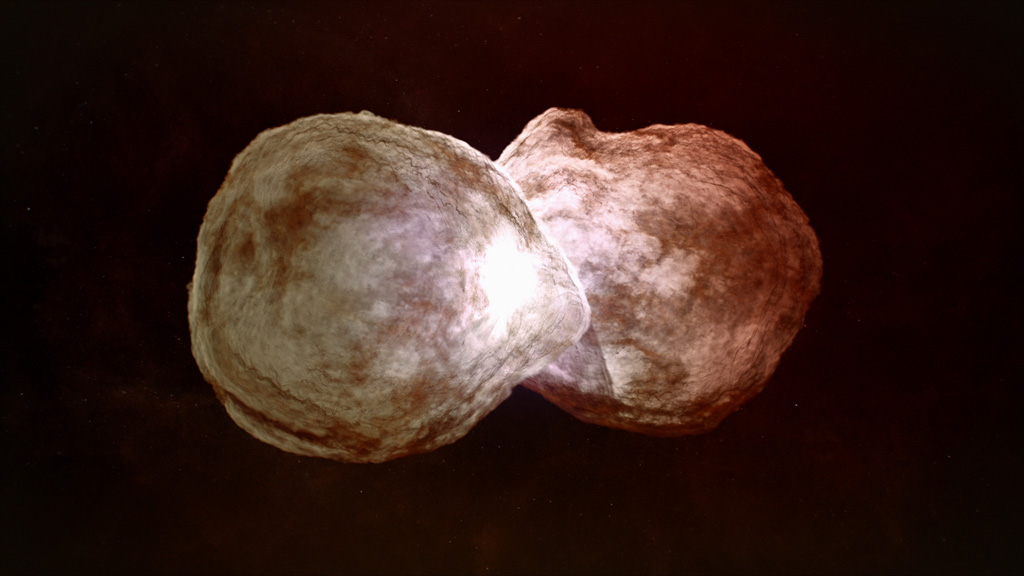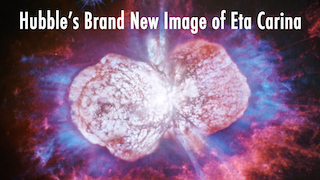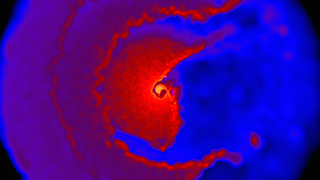Universe
ID: 11936

Eta Carinae, the most luminous and massive stellar system within 10,000 light-years of Earth, is known for its surprising behavior, erupting twice in the 19th century for reasons scientists still don't understand. Located about 7,500 light-years away in the southern constellation of Carina, Eta Carinae comprises two massive stars whose eccentric orbits bring them unusually close every 5.5 years. Both produce powerful gaseous outflows called stellar winds, which enshroud the stars and stymy efforts to directly measure their properties. During the past 11 years, astronomers at NASA's Goddard Space Flight Center have developed a model based on routine observations of the stars using ground-based telescopes and multiple NASA satellites. According to this model, the interaction of the two stellar winds accounts for many of the periodic changes observed in the system. Scientists will use information from the model to further explore the system's inner workings and unravel its tumultuous past. Watch the video to learn more.



Superstar Eta Carinae




Related Stories
For More Information
Story Credits
Visualizer/Animator:
Thomas Madura (ORAU)
Video Editor:
Scott Wiessinger (USRA)
Narration:
Scott Wiessinger (USRA)
Francis Reddy (Syneren Technologies)
Narrator:
Scott Wiessinger (USRA)
Producer:
Scott Wiessinger (USRA)
Scientists:
Thomas Madura (ORAU)
Theodore Gull (NASA/GSFC)
Lead Writer:
Francis Reddy (Syneren Technologies)
Thomas Madura (ORAU)
Video Editor:
Scott Wiessinger (USRA)
Narration:
Scott Wiessinger (USRA)
Francis Reddy (Syneren Technologies)
Narrator:
Scott Wiessinger (USRA)
Producer:
Scott Wiessinger (USRA)
Scientists:
Thomas Madura (ORAU)
Theodore Gull (NASA/GSFC)
Lead Writer:
Francis Reddy (Syneren Technologies)
Please give credit for this item to:
NASA's Goddard Space Flight Center
Homunculus Nebula image courtesy of NASA/ESA/Hubble SM4 ERO Team
NASA's Goddard Space Flight Center
Homunculus Nebula image courtesy of NASA/ESA/Hubble SM4 ERO Team
Short URL to share this page:
https://svs.gsfc.nasa.gov/11936
Keywords:
SVS >> Astrophysics
SVS >> App
NASA Science >> Universe
https://svs.gsfc.nasa.gov/11936
Keywords:
SVS >> Astrophysics
SVS >> App
NASA Science >> Universe









